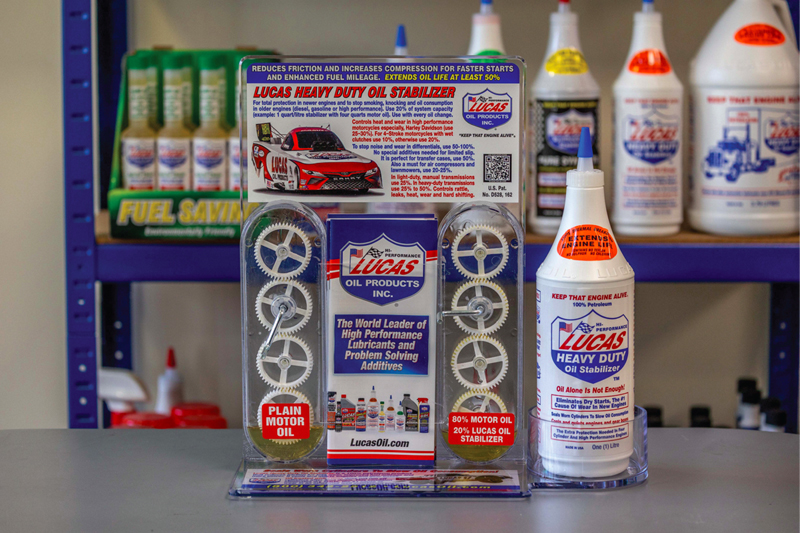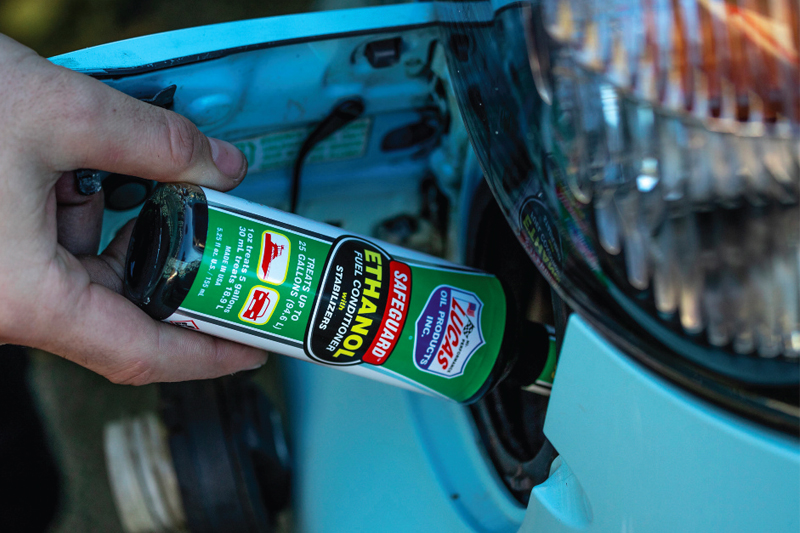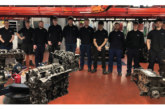
“The Lucas Oil Academy (LOA) is an initiative that introduces young technicians to additive technologies and explains how they work. The LOA does this in association with the technical colleges that run the development programmes for the apprentices from garages throughout different regions,” explained Sales and Operations Director, Dan Morgan, but how does this impact you?
The programme is designed to show that additives are designed to be used not just in older engines, but in the latest vehicle models, too. It demonstrates that additives can be employed not only as simple pre-maintenance products, but also to solve problems and to help support vehicle maintenance programmes over the long term.
Lucas Oil Academy technician, Nathan Owen, points out the value of the programme to both motor factors and workshops: “It helps us to get more information about additives into the garages. The young mechanics develop an appreciation that the additive approach can increase overall garage efficiency. This also helps us to drive business towards the motor factors. More importantly, it will continue to drive business towards the motor factors well into the future, as the young mechanics’ careers progress.”
Lucas Oil claimed that more experienced technicians have been trained to inspect the engine, diagnose the problem and to strip it down before fitting replacement parts. The conflict is that the additive is designed to extend component life, while the technician’s instinctive solution is to remove and replace the component.
Aspiring mechanics have been educated more towards the diagnostics approach, Lucas Oil reported. They appreciate that problem solving additives, such as Lucas Oil Power Steering Stop Leak, are all about instigating an internal repair that will prolong the life of the steering rack. They can understand the potential for a greener, more sustainable solution and the efficiencies that are involved from a workshop perspective.
Nathan continued: “The reality is that (a) the vehicle owner may not be able to afford a replacement and (b) the steering rack may not need to be replaced.”
Through the activities of the LOA, young technicians will learn to judge for themselves how additives can provide alternative solutions in the workshop. Moreover, an additive solution is usually one that an owner can afford. As well as finding the solution more acceptable, it is also a greener and more environmentally friendly alternative.
E10 challenges: phase separation
Lucas Oil claimed that its Upper Cylinder Lubricant has a strong following among technicians wherever pre-MOT checks are being carried out. This is thanks to its reputation for transforming engines with borderline emissions test failure levels into engines with comfortable pass standards. Another fuel additive designed to combat the corrosive properties of ethanol is now keeping technicians abreast of changes in maintenance requirements that are a consequence of the tightening emissions standards and the introduction of E10 fuels.

While higher levels of ethanol may be tolerated by some later cars, the ageing population of the UK vehicle parc means that many of the models built before 2012 that use E10 may now be experiencing problems with internal metal corrosion and rubber fuel pipe degradation. Moreover, these are invisible issues. These and many later models are also exposed to problems relating to ‘phase separation’ of the fuel in the tank.
Phase separation occurs when the hygroscopic nature (water absorption properties) of the ethanol causes water to mix with the fuel in the tank. It causes the formation of a petrol fuel layer at the top of the tank and a separate ethanol/water layer on the bottom of the tank. This layer can generate ignition and internal corrosion difficulties for the engine.
Lucas Oil Academy sessions are used to broadcast news about simple additive solutions for E10 problems, such as Safeguard Ethanol Fuel Conditioner. When added to the fuel tank, it combats the destructive action of the ethanol and helps to prevent fuel separation.
Lucas Oil stated that motor factors with an eye for an opportunity have already spotted that this particular additive is an ideal product to sell as an on-board accessory. If only standard E10 fuels are available, Safeguard Ethanol Fuel Conditioner is simply added to the tank to provide the engine and fuel system with complete protection.
Exploding myths about additives
One of Lucas Oil’s bestselling additives is Heavy Duty Oil Stabilizer. The recommended ratio of oil to additive is 80/20. Used like this, it fortifies the engine oil and eliminates the dry starts that are responsible for most forms of engine damage caused by attrition.
Nathan said: “It’s often thought that the additive is too thick for the engine. It’s also sometimes assumed that by adding the recommended amount of additive, the engine won’t be getting enough oil.
“In fact, as the thick stabiliser product is drawn through the engine, it provides an evenly distributed coating for all moving parts. Importantly, when the vehicle is inactive, the stabiliser continues to provide protection for moving parts long after the engine oil has drained down into the sump.
“Mechanics shouldn’t be concerned if they can’t pour all the oil into the engine. That 20% enhances lubrication, protects against dry starts and improves the overall oil performance.
“Moreover, it’s a saving for the garage that goes straight onto the bottom line.”







